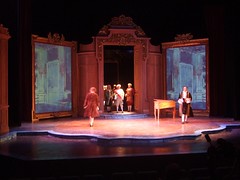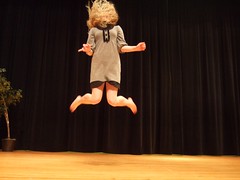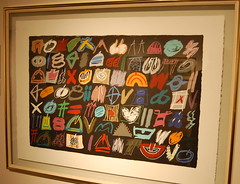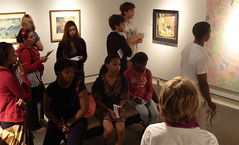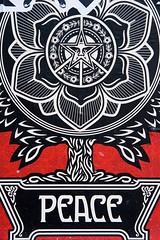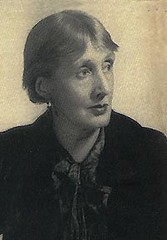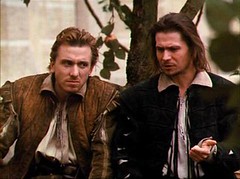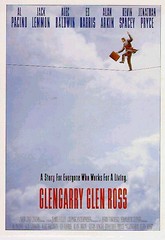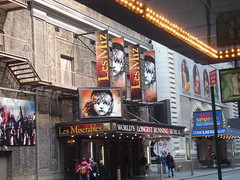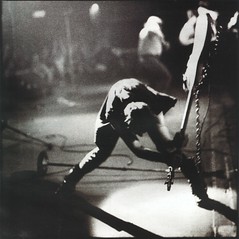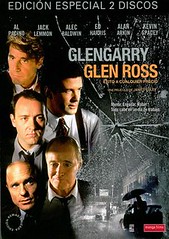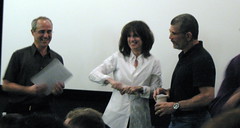Comparison essay on the classics Amadeus and a recent class movie such as Glengarry or Virginia Woolf. -
- Vivid, descriptive opening
- 3rd person
- integrate the movies
- address plot summary, principal characters and the parallels that offer a basis for comparison.
- include a quote from each
- evaluate and describe
15 pts.
GoogleDocs
Tuesday, March 31, 2009
Amadeus: Academy awards for Best Picture and Best Actor, 1984
Amadeus is a stage play written in 1979 by Peter Shaffer, loosely based on the lives of the composers Wolfgang Amadeus Mozart and Antonio Salieri, says wikipedia.
Amadeus was inspired by Mozart and Salieri, a short play by Aleksandr Pushkin and later adapted into an opera of the same name by Nikolai Rimsky-Korsakov. Shaffer then adapted the play for a film released in 1984.
Historical background
Shaffer took dramatic licence in his portrayals of both Mozart and Salieri, but there is debate as to just how much. Documentary evidence suggests that there was some antipathy between Mozart and Salieri, but the idea that Salieri was the instigator of Mozart's demise is not given academic credence. While there may have been real rivalry between Mozart and Salieri, there is also evidence that they enjoyed a relationship marked by mutual respect.[1] For example, Salieri later tutored Mozart's son Franz Xaver Wolfgang Mozart in music.
Surviving letters by and about Mozart give examples of his boorish and often crude sense of humour, with a penchant for coprophilic jokes. Mozart was extremely childlike, almost never able to sit still, even during others' performances. He was self-confident to the point of arrogance and his stubbornness and penchant for juvenile indulgences often annoyed his more staid peers.
Extant records show Mozart was not a good money manager and suffered from large debts (he loved clothing and spent huge sums on it) and also favoured partying, drinking, gambling and possibly drug use. As portrayed in Amadeus, Mozart actually comes off as fairly tame. However, he also had a huge income, particularly from his own performances as a conductor or musician. There is no evidence that he didn't pay back his loans even if many letters shows that he often was out of money. Mozart's relationship with his father as portrayed in the film seems to be accurate, judging from the subtext of their letters to each other.
Amadeus was inspired by Mozart and Salieri, a short play by Aleksandr Pushkin and later adapted into an opera of the same name by Nikolai Rimsky-Korsakov. Shaffer then adapted the play for a film released in 1984.
Historical background
Shaffer took dramatic licence in his portrayals of both Mozart and Salieri, but there is debate as to just how much. Documentary evidence suggests that there was some antipathy between Mozart and Salieri, but the idea that Salieri was the instigator of Mozart's demise is not given academic credence. While there may have been real rivalry between Mozart and Salieri, there is also evidence that they enjoyed a relationship marked by mutual respect.[1] For example, Salieri later tutored Mozart's son Franz Xaver Wolfgang Mozart in music.
Surviving letters by and about Mozart give examples of his boorish and often crude sense of humour, with a penchant for coprophilic jokes. Mozart was extremely childlike, almost never able to sit still, even during others' performances. He was self-confident to the point of arrogance and his stubbornness and penchant for juvenile indulgences often annoyed his more staid peers.
Extant records show Mozart was not a good money manager and suffered from large debts (he loved clothing and spent huge sums on it) and also favoured partying, drinking, gambling and possibly drug use. As portrayed in Amadeus, Mozart actually comes off as fairly tame. However, he also had a huge income, particularly from his own performances as a conductor or musician. There is no evidence that he didn't pay back his loans even if many letters shows that he often was out of money. Mozart's relationship with his father as portrayed in the film seems to be accurate, judging from the subtext of their letters to each other.
Friday, March 27, 2009
Exit essay for seniors
To reflect upon your Magnet years is to have a moment of meditative communication, which I think is important. This writing is called the Exit Essay.
You may consider the growth you've shown in your past 4 years as well as the unchanging things about you. You may muse about about your emotional maturity as well as physical maturity.
Most of all I want you to write about your academic development. You may write about Magnet: the good, the bad, the ugly. Keep your perspective balanced and judicious, please. I want to read about the learning styles you've explored, the fields of interest you've discovered and your thoughts about the future.
You may consider the growth you've shown in your past 4 years as well as the unchanging things about you. You may muse about about your emotional maturity as well as physical maturity.
Most of all I want you to write about your academic development. You may write about Magnet: the good, the bad, the ugly. Keep your perspective balanced and judicious, please. I want to read about the learning styles you've explored, the fields of interest you've discovered and your thoughts about the future.
Leonard Bernstein: From Young People's Concerts w the NY Philharmonic to West Side Story
Leonard Bernstein ( August 25, 1918 – October 14, 1990) was a multi-Emmy-winning [2] and Academy Award nominated American conductor, composer, author, music lecturer and pianist, says Wikipedia.
He was among the first conductors born and educated in the United States of America to receive worldwide acclaim. He is perhaps best known for his long conducting relationship with the New York Philharmonic, which included the acclaimed Young People's Concerts series, and also for his compositions, which include the musical theater works West Side Story, Candide, and On the Town.
Bernstein was the first classical music conductor to make numerous television appearances, all between 1954 and 1989. Additionally, he had a formidable piano technique[3] and was a highly respected composer. He was "one of the most prodigally talented and successful musicians in American history."[4]
He was among the first conductors born and educated in the United States of America to receive worldwide acclaim. He is perhaps best known for his long conducting relationship with the New York Philharmonic, which included the acclaimed Young People's Concerts series, and also for his compositions, which include the musical theater works West Side Story, Candide, and On the Town.
Bernstein was the first classical music conductor to make numerous television appearances, all between 1954 and 1989. Additionally, he had a formidable piano technique[3] and was a highly respected composer. He was "one of the most prodigally talented and successful musicians in American history."[4]
Wednesday, March 25, 2009
Martha Graham: "Some of you are doomed to be artists"
Martha Graham (May 11, 1894 – April 1, 1991) was an American dancer and choreographer regarded as one of the foremost pioneers of modern dance, whose influence on dance can be compared to the influence Stravinsky had on music, Picasso had on the visual arts, or Frank Lloyd Wright had on architecture.[1]
Graham invented a new language of movement, says Wikipedia, and used it to reveal the passion, the rage and the ecstasy common to human experience.
She danced and choreographed for over seventy years, and during that time was the first dancer ever to perform at The White House, the first dancer ever to travel abroad as a cultural ambassador, and the first dancer ever to receive the highest civilian award, the Medal of Freedom.
In her lifetime she received honors ranging from the key to the City of Paris to Japan's Imperial Order of the Precious Crown. She said "I have spent all my life with dance and being a dancer. It's permitting life to use you in a very intense way. Sometimes it is not pleasant. Sometimes it is fearful. But nevertheless it is inevitable."
Graham invented a new language of movement, says Wikipedia, and used it to reveal the passion, the rage and the ecstasy common to human experience.
She danced and choreographed for over seventy years, and during that time was the first dancer ever to perform at The White House, the first dancer ever to travel abroad as a cultural ambassador, and the first dancer ever to receive the highest civilian award, the Medal of Freedom.
In her lifetime she received honors ranging from the key to the City of Paris to Japan's Imperial Order of the Precious Crown. She said "I have spent all my life with dance and being a dancer. It's permitting life to use you in a very intense way. Sometimes it is not pleasant. Sometimes it is fearful. But nevertheless it is inevitable."
Tuesday, March 24, 2009
French painter documented Indochina, 1936 - 38: Jean Despujols, Meadows Museum of Art, Shreveport
Jean Despujols gained renown early in his career as an artist when he won the Prix de Rome scholarship in 1914, says Wikipedia. In 1936, the Société des Artistes Coloniaux in Paris selected Despujols to travel throughout French Indochina to record his impressions on canvas and paper.
He traveled in Vietnam, Cambodia and Laos and painted and sketched some 360 works from '36 to '38. He captured the people, landscapes and still lifes.
He moved to Shreveport in 1941, the year the Germans took over Paris.
His evocative works were featured at the Smithsonian in 1950 and in National geographic magazine in 1951. Despujols worked as a portrait painter as well as fine arts painter in Shreveport. He died in 1965.
In 1969 his Indochina works became part of the permanent collection of the Meadows Museum of Art at Centenary College in Shreveport, Louisiana.
He traveled in Vietnam, Cambodia and Laos and painted and sketched some 360 works from '36 to '38. He captured the people, landscapes and still lifes.
He moved to Shreveport in 1941, the year the Germans took over Paris.
His evocative works were featured at the Smithsonian in 1950 and in National geographic magazine in 1951. Despujols worked as a portrait painter as well as fine arts painter in Shreveport. He died in 1965.
In 1969 his Indochina works became part of the permanent collection of the Meadows Museum of Art at Centenary College in Shreveport, Louisiana.
Ida Kohlmeyer, New Orleanian, one of Louisiana's most prominent artists
Ida Kohlmeyer, an abstract painter known for colorful pictographic canvases, spent most of her life in New Orleans, took up painting when she was in her 30s, and managed to achieve wide recognition for her work, which was exhibited in galleries and museums around the country, said the NY Times in her obituary.
A daughter of Polish immigrants, Ida Rutenberg earned a bachelor's degree in English literature at Sophie Newcomb College of Tulane University in New Orleans. Her interest in art began during her honeymoon in Mexico, when she was drawn to the ceramic folk art of Central and South America.
In 1950 she returned to Newcomb, this time to its art school, and earned a master's degree in painting. In 1956 she studied at the summer painting school of the New York painter Hans Hofmann, known for his use of color, who persuaded her to give up representational art for abstraction. For more than a decade she worked primarily in a gestural style influenced by Hofmann and other Abstract Expressionists, including Arshile Gorky and Mark Rothko, whom she met in New York.
By the mid-1970s, inspired by the work of Miro as well as her interest in South American art, she developed a distinctive vocabulary of hieroglyphs, shapes and signs, all organized in a loose grid, that hovered among abstraction, writing and emblem. That style, which she explored for the rest of her life and eventually translated into sculpture, gave expression to her draftsmanship and encouraged her sense of color.
Mrs. Kohlmeyer had her first exhibition at the New Orleans Museum of Art in 1957. Her first exhibition in New York City was at the Ruth White Gallery in 1959.
The High Museum of Art in Atlanta held a retrospective of her work in 1972, and a retrospective that was organized by the Mint Museum of Art in Charlotte, N.C., traveled to seven cities in 1984 and 1985. Her most recent New York show was at the Mary Ryan Gallery in 1995.
Nancy Graves, American artist known for lunar maps
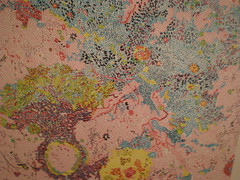
Nancy Graves 'V' ('Montes Apennius Region of the moon') from 'Lunar Maps' 1972, IMA, Indianapolis, Indiana
Originally uploaded by hanneorla
Graves's most famous sculpture, Camels, was first displayed in the Whitney Museum of American Art. The sculpture features three separate camels, each made of many materials, among them burlap, wax, figerglass, and animal skin. Each camel is also painted with acrylics and oil colors to appear realistic.
Graves also created a distinctive body of aerial landscapes, mostly based on maps of the moon and similar sources.
Brief review of visit to Meadows Musem, Shreveport
In your brief evaluative and descriptive essay on the visit to Meadows please touch upon the following . . .
- quote(s)
- description of art in 3 areas: work by Jean Despujols, Chris Kelly ceramics, modern art in Meadows permanent collection
- perspective on Meadows: what is its value to the public?
- the subject of your sketch
10 pts.
Google Docs
- quote(s)
- description of art in 3 areas: work by Jean Despujols, Chris Kelly ceramics, modern art in Meadows permanent collection
- perspective on Meadows: what is its value to the public?
- the subject of your sketch
10 pts.
Google Docs
Make sure all assignments are stored in Google Docs
Make sure you catch up with all 9 weeks assignments and that all writing for this class is included in your Google Doc cache -
1. Photography project
2. Masks project
3. Norton Gallery review
4. American Graffitti review
5. A Funny Thing Happened on the way to the Forum review (or equivalent)
6. Pop music project
7. Glengarry Glen Ross review (or equivalent)
8. Who's Afraid of Virginia Woolf review
Essay rubric . . .
- Jazzy title
- Colorful opening.
- Documentation, where appropriate.
- Strengths as well as weaknesses, or areas for improvement.
- Focus on characters (and actors) and emotional dynamics rather than plot summary.
- Quote(s)
- Proofread for spelling and construction.
- GoogleDocs - and please give each item a title.
1. Photography project
2. Masks project
3. Norton Gallery review
4. American Graffitti review
5. A Funny Thing Happened on the way to the Forum review (or equivalent)
6. Pop music project
7. Glengarry Glen Ross review (or equivalent)
8. Who's Afraid of Virginia Woolf review
Essay rubric . . .
- Jazzy title
- Colorful opening.
- Documentation, where appropriate.
- Strengths as well as weaknesses, or areas for improvement.
- Focus on characters (and actors) and emotional dynamics rather than plot summary.
- Quote(s)
- Proofread for spelling and construction.
- GoogleDocs - and please give each item a title.
Sunday, March 22, 2009
Field trip to Meadows Musuem of Art on Mon, Mar 23, during the class period
Brief field trip on Monday, 1:30 pm. Parents welcome to join us.
The importance of Meadows Museum, Centenary College:
- The permanent collection of Jean Despujols' paintings of Vietnam, Cambodia, Laos documenting life in 1934 - 36.
- Special exhibits such as Thai textiles, reflecting the background of Despujols' paintings.
- Academic exhibits such as the ceramic sculpture of Georgia professor Chris Kelly, currently in the museum.
- Modern art both from regional artists such as Clyde Connell and Ida Kohlmeyer (New Orleans) and artists from across the country and world.
- Unusual items in the gift shop.
The importance of Meadows Museum, Centenary College:
- The permanent collection of Jean Despujols' paintings of Vietnam, Cambodia, Laos documenting life in 1934 - 36.
- Special exhibits such as Thai textiles, reflecting the background of Despujols' paintings.
- Academic exhibits such as the ceramic sculpture of Georgia professor Chris Kelly, currently in the museum.
- Modern art both from regional artists such as Clyde Connell and Ida Kohlmeyer (New Orleans) and artists from across the country and world.
- Unusual items in the gift shop.
Friday, March 20, 2009
Shepard Fairey: major exhibit in Boston
The surprise of the Shepard Fairey retrospective show at Boston's Institute of Contemporary Art — for the uninitiated, at least — will be that almost everything Mr. Fairey does, from his abstracted images of Andre the Giant to his album covers for Led Zeppelin and other bands, is visually arresting, says the NY Times.
Those who have followed his career won’t be surprised, either, by his progression from aesthetic anarchist to savvy, all-purpose designer and illustrator whose street cred has been worn out by his all-too-successful commercial ventures.
Those who have followed his career won’t be surprised, either, by his progression from aesthetic anarchist to savvy, all-purpose designer and illustrator whose street cred has been worn out by his all-too-successful commercial ventures.
Thursday, March 19, 2009
Richard Burton, Sir Richard Burton, that is, on screen and stage
Richard Burton, CBE (10 November 1925 – 5 August 1984) was a British 7 time Academy Award nominated, Golden Globe and BAFTA Award winning actor. He was at one time the highest-paid actor in Hollywood and is best associated with his second wife, actress Elizabeth Taylor, notes Wikipedia. [1]
Early on as an actor, he developed the habit of toting around a book-bag filled with novels, dictionaries, a complete Shakespeare, and books of quotations, history, and biography, to stoke his mind and stimulate conversation. He was also an enthusiastic crossword puzzle solver. His Welsh love of language was paramount, as he famously stated years later, with a tearful Elizabeth Taylor at his side, “The only thing in life is language. Not love. Not anything else.”[18]
In the 1951 season at Stratford, he gave a critically acclaimed performance and achieved stardom as Prince Hal in Shakespeare's Henry IV, Part 1 opposite Anthony Quayle's Falstaff. Philip Burton arrived at Strafford to help coach his former charge, and he noted in his memoir that Quayle and Richard Burton had their differences about the interpretation of the Prince Hal role. Richard Burton was already demonstrating the same independence and competitiveness as an actor that he displayed off-stage in drinking, sport, or story-telling.
In 1952, Burton successfully made the transition to a Hollywood star; on the recommendation of Daphne du Maurier, he was given the leading role in My Cousin Rachel opposite Olivia de Havilland.[26] Burton arrived on the Hollywood scene at a time when the studios were struggling. Television's rise was drawing away viewers and the studios looked to new stars and new film technology to staunch the bleeding.
Burton was offered a seven-year, $1 million contract by Darryl Zanuck at Fox.[30] It has been suggested that remarks Burton made about blacklisting Hollywood while filming The Robe may have explained his failure to ever win an Oscar, despite receiving seven nominations.
Burton appeared on Broadway, receiving a Tony Award nomination for Time Remembered (1958) and winning the award for playing King Arthur in the musical Camelot (1960). Burton's reviews were excellent, Time magazine stated that Burton “gives Arthur the skillful and vastly appealing performance that might be expected from one of England's finest young actors”. The show's album was a major seller. The Kennedys, newly in the White House, also enjoyed the play and invited Burton for a visit, establishing the link of the idealistic, young Kennedy administration with Camelot.
In the troubled production Cleopatra (1963), Twentieth Century-Fox's future appeared to hinge on what became the most expensive movie ever made up until then, reaching almost $40 million.[43] The film proved to be the start of Burton's most successful period in Hollywood; he would remain among the top 10 box-office earners for the next four years. During the filming, Burton met and fell in love with Elizabeth Taylor, who was married to Eddie Fisher. The two would not be free to marry until 1965 when their respective divorces were complete.
In 1964, Burton triumphed as defrocked Episcopal priest Dr. T. Lawrence Shannon in Tennessee Williams' The Night of the Iguana directed by John Huston, a film which became another critical and box office success. Richard Burton's performance in The Night of the Iguana may be his finest hour on the screen, and in the process helped put the town of Puerto Vallarta on the map (the Burtons later bought a house there). Part of Burton's success was due to how well he varied his acting with the three female characters, each of which he tries to seduce differently: Ava Gardner (the randy hotel owner), Sue Lyons (the nubile American tourist), and Deborah Kerr (the poor, repressed artist).[47]
He and Taylor had a great success in Mike Nichols's film (1966) of the Edward Albee play Who's Afraid of Virginia Woolf?, in which a bitter erudite couple spend the evening trading vicious barbs in front of their horrified and fascinated guests, played by George Segal and Sandy Dennis. Burton was not the first choice for the role of Taylor's husband. Jack Lemmon was offered the role first, but when he backed off, Jack Warner, with Taylor's insistence, agreed on Burton and paid him his price. Albee preferred Bette Davis and James Mason, fearing that the Burtons' strong screen presence would dominate the film.[50] Nichols, in his directorial debut, managed the Burtons brilliantly. The script by Hollywood veteran Ernest Lehman broke new ground for its raw language and harsh depiction of marriage. Although all four actors received Oscar nominations for their roles in the film (the film received a total of thirteen), only Taylor and Dennis went on to win. So immersed had the Burtons become in the roles of George and Martha over the months of shooting, after the wrap Richard Burton said, “I feel rather lost”.[49] Later the couple would state that the film took its toll on their relationship, and that Taylor was “tired of playing Martha” in real life.[51]
Burton was married five times, first to Sybil Williams from 1949 to 1963, with whom he had two children, actress Kate Burton and Jessica Burton. He was married twice, consecutively, to Elizabeth Taylor (15 March 1964 – 26 June 1974 and 10 October 1975 – 29 July 1976). The first marriage took place in Montreal. Their second marriage occurred sixteen months after their divorce, in the Chobe National Park, Kasane, Botswana. In 1964, the couple adopted a 3-year-old German girl they named Maria. The relationship between them portrayed in Who's Afraid of Virginia Woolf? was popularly likened to Burton and Taylor's real-life marriage.[55]
On the Michael Parkinson show in 1974, Burton acknowledged homosexual experiences as a young actor on the London stage in the 1950s[citation needed]. He also suggested that perhaps all actors were latent homosexuals, and "we cover it up with drink". In 2000, a biography of Elizabeth Taylor suggested that Burton may have had an affair with Laurence Olivier. Burton was also notorious for his unrestrained pursuit of women while filming. Joan Collins wrote that when she rejected his on-set advances, he embarked on a series of liaisons with other women including an elderly black maid who, according to Collins, was "almost toothless". Collins playfully told Burton that she believed he would sleep with a snake if he had the chance, to which Burton is alleged to have replied "only if it was wearing a skirt, darling".
Burton died peacefully in his sleep of a cerebral hemorrhage in 1984 at his home in Switzerland, where he is buried. He was 58 years old. Burton was buried in a red suit, a tribute to his Welsh roots.[56]
Early on as an actor, he developed the habit of toting around a book-bag filled with novels, dictionaries, a complete Shakespeare, and books of quotations, history, and biography, to stoke his mind and stimulate conversation. He was also an enthusiastic crossword puzzle solver. His Welsh love of language was paramount, as he famously stated years later, with a tearful Elizabeth Taylor at his side, “The only thing in life is language. Not love. Not anything else.”[18]
In the 1951 season at Stratford, he gave a critically acclaimed performance and achieved stardom as Prince Hal in Shakespeare's Henry IV, Part 1 opposite Anthony Quayle's Falstaff. Philip Burton arrived at Strafford to help coach his former charge, and he noted in his memoir that Quayle and Richard Burton had their differences about the interpretation of the Prince Hal role. Richard Burton was already demonstrating the same independence and competitiveness as an actor that he displayed off-stage in drinking, sport, or story-telling.
In 1952, Burton successfully made the transition to a Hollywood star; on the recommendation of Daphne du Maurier, he was given the leading role in My Cousin Rachel opposite Olivia de Havilland.[26] Burton arrived on the Hollywood scene at a time when the studios were struggling. Television's rise was drawing away viewers and the studios looked to new stars and new film technology to staunch the bleeding.
Burton was offered a seven-year, $1 million contract by Darryl Zanuck at Fox.[30] It has been suggested that remarks Burton made about blacklisting Hollywood while filming The Robe may have explained his failure to ever win an Oscar, despite receiving seven nominations.
Burton appeared on Broadway, receiving a Tony Award nomination for Time Remembered (1958) and winning the award for playing King Arthur in the musical Camelot (1960). Burton's reviews were excellent, Time magazine stated that Burton “gives Arthur the skillful and vastly appealing performance that might be expected from one of England's finest young actors”. The show's album was a major seller. The Kennedys, newly in the White House, also enjoyed the play and invited Burton for a visit, establishing the link of the idealistic, young Kennedy administration with Camelot.
In the troubled production Cleopatra (1963), Twentieth Century-Fox's future appeared to hinge on what became the most expensive movie ever made up until then, reaching almost $40 million.[43] The film proved to be the start of Burton's most successful period in Hollywood; he would remain among the top 10 box-office earners for the next four years. During the filming, Burton met and fell in love with Elizabeth Taylor, who was married to Eddie Fisher. The two would not be free to marry until 1965 when their respective divorces were complete.
In 1964, Burton triumphed as defrocked Episcopal priest Dr. T. Lawrence Shannon in Tennessee Williams' The Night of the Iguana directed by John Huston, a film which became another critical and box office success. Richard Burton's performance in The Night of the Iguana may be his finest hour on the screen, and in the process helped put the town of Puerto Vallarta on the map (the Burtons later bought a house there). Part of Burton's success was due to how well he varied his acting with the three female characters, each of which he tries to seduce differently: Ava Gardner (the randy hotel owner), Sue Lyons (the nubile American tourist), and Deborah Kerr (the poor, repressed artist).[47]
He and Taylor had a great success in Mike Nichols's film (1966) of the Edward Albee play Who's Afraid of Virginia Woolf?, in which a bitter erudite couple spend the evening trading vicious barbs in front of their horrified and fascinated guests, played by George Segal and Sandy Dennis. Burton was not the first choice for the role of Taylor's husband. Jack Lemmon was offered the role first, but when he backed off, Jack Warner, with Taylor's insistence, agreed on Burton and paid him his price. Albee preferred Bette Davis and James Mason, fearing that the Burtons' strong screen presence would dominate the film.[50] Nichols, in his directorial debut, managed the Burtons brilliantly. The script by Hollywood veteran Ernest Lehman broke new ground for its raw language and harsh depiction of marriage. Although all four actors received Oscar nominations for their roles in the film (the film received a total of thirteen), only Taylor and Dennis went on to win. So immersed had the Burtons become in the roles of George and Martha over the months of shooting, after the wrap Richard Burton said, “I feel rather lost”.[49] Later the couple would state that the film took its toll on their relationship, and that Taylor was “tired of playing Martha” in real life.[51]
Burton was married five times, first to Sybil Williams from 1949 to 1963, with whom he had two children, actress Kate Burton and Jessica Burton. He was married twice, consecutively, to Elizabeth Taylor (15 March 1964 – 26 June 1974 and 10 October 1975 – 29 July 1976). The first marriage took place in Montreal. Their second marriage occurred sixteen months after their divorce, in the Chobe National Park, Kasane, Botswana. In 1964, the couple adopted a 3-year-old German girl they named Maria. The relationship between them portrayed in Who's Afraid of Virginia Woolf? was popularly likened to Burton and Taylor's real-life marriage.[55]
On the Michael Parkinson show in 1974, Burton acknowledged homosexual experiences as a young actor on the London stage in the 1950s[citation needed]. He also suggested that perhaps all actors were latent homosexuals, and "we cover it up with drink". In 2000, a biography of Elizabeth Taylor suggested that Burton may have had an affair with Laurence Olivier. Burton was also notorious for his unrestrained pursuit of women while filming. Joan Collins wrote that when she rejected his on-set advances, he embarked on a series of liaisons with other women including an elderly black maid who, according to Collins, was "almost toothless". Collins playfully told Burton that she believed he would sleep with a snake if he had the chance, to which Burton is alleged to have replied "only if it was wearing a skirt, darling".
Burton died peacefully in his sleep of a cerebral hemorrhage in 1984 at his home in Switzerland, where he is buried. He was 58 years old. Burton was buried in a red suit, a tribute to his Welsh roots.[56]
Wednesday, March 18, 2009
Elizabeth Taylor, 'Who's Afraid of Virginia Woolf?, 1965
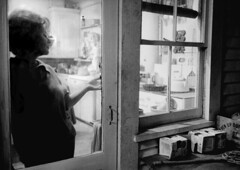
Elizabeth Taylor, screen door, 'Who's Afraid of Virginia Woolf?, 1965
Originally uploaded by Bob Willoughby
Taylor appeared in her first motion picture at the age of nine in There's One Born Every Minute. The role of Velvet Brown in MGM's National Velvet skyrocketed Taylor to stardom at the tender age of 12. Taylor's character, Velvet Brown, is a young girl who trains her beloved horse to win the Grand National. National Velvet, which also costarred beloved American favorite Mickey Rooney and English newcomer Angela Lansbury, became an overwhelming success upon its release in December 1944 and altered Taylor's life forever.
Her reputation as a bankable adolescent star and nickname of "One-Shot Liz" (referring to her ability to shoot a scene in one take) promised her a full and bright career with Metro. Taylor's portrayal as Amy, in the American classic Little Women (1949) would prove to be her last adolescent role.
A Place in the Sun (1949) became the pivotal performance of Taylor's career as critics acclaimed it as a classic, a reputation it sustained throughout the next 50 years of cinema history.
Taylor was nominated for Academy Awards for her starring roles in the following films: Raintree County (1957) opposite Montgomery Clift; Cat on a Hot Tin Roof (1958) opposite Paul Newman; and Suddenly, Last Summer (1959) with Montgomery Clift.
In 1963, Taylor became the highest paid movie star up until that time when she accepted US$1 million to play the title role in the lavish production of Cleopatra for 20th Century Fox. It was during the filming of that movie that she worked for the first time with future husband Richard Burton, who played Mark Antony.
Taylor won the Academy Award for Best Actress in a Leading Role for her performances in BUtterfield 8 (1960), which costarred then husband Eddie Fisher, and again for Who's Afraid of Virginia Woolf? (1966), which costarred then husband Richard Burton and the Supporting Actress Oscar winner, Sandy Dennis.
Taylor was in the news recently for a rumoured ninth marriage to her constant companion Jason Winters.
Taylor has a passion for jewelry. She is a client of well-known jewelry designer, Shlomo Moussaieff. Over the years she has owned a number of well known pieces, two of the most talked about being the 33.19 carats (6.64 g) Krupp Diamond and the 69.42 carats (13.88 g) pear-shaped Taylor-Burton Diamond, which were among many gifts from husband Richard Burton. Taylor also owns the 50 carats (10 g) La Peregrina Pearl, purchased by Burton as a Valentine's Day present in 1969. The pearl was formerly owned by Mary I of England.
Taylor has devoted much time and energy to AIDS-related charities and fundraising. She helped start the American Foundation for AIDS Research (amfAR) after the death of her former costar and friend, Rock Hudson. By 1999, she had helped to raise an estimated US$50 million to fight the disease.
Who's Afraid of Virginia Woolf? Brief essay
Consider Edward Albee's antagonistic couple in his drama, "Who's Afraid of Virginia Woolf?" Both are brutal bombers on the domestic front.
Describe 2 incidents of attack by masticating Martha and 2 examples of attack by gross, egregious George in their connubial debates.
Tell which of these tawdry beings wins the least sympathy from you, and, importantly, why this character seems slightly less odious than the other.
Describe 2 incidents of attack by masticating Martha and 2 examples of attack by gross, egregious George in their connubial debates.
Tell which of these tawdry beings wins the least sympathy from you, and, importantly, why this character seems slightly less odious than the other.
Sunday, March 15, 2009
Virginia Woolf, English novelist and essayist and early feminist
Adeline Virginia Woolf (née Stephen; 25 January 1882 – 28 March 1941) was an English novelist and essayist, regarded as one of the foremost modernist literary figures of the twentieth century.
During the interwar period, Woolf was a significant figure in London literary society and a member of the Bloomsbury Group, says Wikipedia. Her most famous works include the novels Mrs Dalloway (1925), To the Lighthouse (1927) and Orlando (1928), and the book-length essay A Room of One's Own (1929), with its famous dictum, "a woman must have money and a room of her own if she is to write fiction."
Woolf is considered one of the greatest innovators in the English language. In her works she experimented with stream-of-consciousness and the underlying psychological as well as emotional motives of characters. Woolf's reputation declined sharply after World War II, but her eminence was re-established with the surge of Feminist criticism in the 1970s.
During the interwar period, Woolf was a significant figure in London literary society and a member of the Bloomsbury Group, says Wikipedia. Her most famous works include the novels Mrs Dalloway (1925), To the Lighthouse (1927) and Orlando (1928), and the book-length essay A Room of One's Own (1929), with its famous dictum, "a woman must have money and a room of her own if she is to write fiction."
Woolf is considered one of the greatest innovators in the English language. In her works she experimented with stream-of-consciousness and the underlying psychological as well as emotional motives of characters. Woolf's reputation declined sharply after World War II, but her eminence was re-established with the surge of Feminist criticism in the 1970s.
The human condition and Edward Albee, playwright of Who's Afraid of Virginia Woolf
Edward Franklin Albee III (born March 12, 1928) is an American playwright best known for works, Who's Afraid of Virginia Woolf?, The Zoo Story, The Sandbox and The American Dream. His works are considered well-crafted, often unsympathetic examinations of the modern condition, says Wikipedia.
His early works reflect a mastery and Americanization of the Theatre of the Absurd that found its peak in works by European playwrights such as Jean Genet, Samuel Beckett, and Eugène Ionesco. Younger American playwrights, such as Pulitzer Prize-winner Paula Vogel, credit Albee's daring mix of theatricalism and biting dialogue with helping to reinvent the post-war American theatre in the early 1960s.
Albee has received three Pulitzer Prizes for drama — for A Delicate Balance (1967), Seascape (1975), Three Tall Women (1994); a Special Tony Award for Lifetime Achievement (2005); the Gold Medal in Drama from the American Academy and Institute of Arts and Letters (1980); as well as the Kennedy Center Honors and the National Medal of Arts (both in 1996).
His early works reflect a mastery and Americanization of the Theatre of the Absurd that found its peak in works by European playwrights such as Jean Genet, Samuel Beckett, and Eugène Ionesco. Younger American playwrights, such as Pulitzer Prize-winner Paula Vogel, credit Albee's daring mix of theatricalism and biting dialogue with helping to reinvent the post-war American theatre in the early 1960s.
Albee has received three Pulitzer Prizes for drama — for A Delicate Balance (1967), Seascape (1975), Three Tall Women (1994); a Special Tony Award for Lifetime Achievement (2005); the Gold Medal in Drama from the American Academy and Institute of Arts and Letters (1980); as well as the Kennedy Center Honors and the National Medal of Arts (both in 1996).
Fisheye portrait of cast of 'Who's Afraid of Virginia Woolf?, 1965

Fisheye portrait of cast of 'Who's Afraid of Virginia Woolf?, 1965
Originally uploaded by Bob Willoughby
Who's Afraid of Virginia Woolf? won both the 1963 Tony Award for Best Play and the 1962-63 New York Drama Critics' Circle Award for Best Play, says Wikipedia. It was also selected for the 1963 Pulitzer Prize for Drama by that award's drama jury. However, the award's advisory board—the trustees of Columbia University—objected to the play's then-controversial use of profanity and sexual themes, and overruled the award's advisory committee, awarding no Pulitzer Prize for drama in 1963.
Who's Afraid of Virginia Woolf? is a play on the title of the once popular song "Who's Afraid of the Big Bad Wolf?" from Walt Disney's The Three Little Pigs, but named after a famous English novelist.
In the play, George and Martha invite a new professor and his wife to their house after a party. Martha is the daughter of the president of a university where George is an associate history professor. Nick (who is never addressed or introduced by name) is a biology professor who Martha thinks teaches math, and Honey is his mousy, brandy-abusing wife. Once at home, Martha and George continue drinking and engage in relentless, scathing verbal and sometimes physical abuse in front of Nick and Honey. The younger couple are simultaneously fascinated and embarrassed. They stay even though the abuse turns periodically towards them as well.
The darker veins running through the play's dialogue suggest that the border between fiction and reality is continually challenged. The play ends with Martha answering the titular question of who is afraid to live their life free of illusions with, "I am, George, I am." Implicitly, exposure is something everyone fears; façade (be it social or psychological), although damaging, provides a comfort.
By 1962 Americans, it seemed, were ready for such satire. There was a groundswell of interest in the play, which in its own way was an inspiration (if in small part) to the millions of young people in the 1960s and 70s who were not interested in what they regarded as a rat-race. The next generation imagined that they were not going to make the same mistakes as their parents.
Rosencrantz and Guildenstern Are Dead: absurdist, existential tragicomedy
Rosencrantz and Guildenstern Are Dead is an absurdist, existentialist tragicomedy by Tom Stoppard, first staged at the Edinburgh Festival Fringe in 1966.[1] The play expands upon the exploits of two minor characters from Shakespeare's Hamlet, says Wikipedia.
Comparisons have been drawn to Samuel Beckett's Waiting For Godot, for the presence of two central characters who almost appear to be two halves of a single character.
Themes:
- Absurdity
The story underlines the irrationality of the world in multiple instances. Stoppard emphasizes the randomness of the world.
- Art vs. Reality
The players help demonstrate the conflict between art and reality. The world in which Rosencrantz and Guildenstern live lacks order. However, art allows people that live in this world, as Stoppard hints that we do, to find order. As the player king says, "There's a design at work in all art."
- Limits of Language
Stoppard mocks language in sequences where the characters fail to express what they are thinking because words cannot exactly capture their thoughts. Instead, they appear ridiculous.
- Insignificance
Rosencrantz and Guildenstern often feel as if they are unable to make any choices that will actually have an impact on their lives. They acknowledge that they must act at the random whims of the other characters, but do not make any effort to fight this lack of control.
- Metatheatre
Metatheatre is a central structural element of Rosencrantz and Guildenstern Are Dead. Metatheatrical scenes, that is, scenes that are staged as plays, dumb shows, or commentaries on dramatic theory and practice, are prominent in both Stoppard’s play and Shakespeare’s original tragedy Hamlet.
Comparisons have been drawn to Samuel Beckett's Waiting For Godot, for the presence of two central characters who almost appear to be two halves of a single character.
Themes:
- Absurdity
The story underlines the irrationality of the world in multiple instances. Stoppard emphasizes the randomness of the world.
- Art vs. Reality
The players help demonstrate the conflict between art and reality. The world in which Rosencrantz and Guildenstern live lacks order. However, art allows people that live in this world, as Stoppard hints that we do, to find order. As the player king says, "There's a design at work in all art."
- Limits of Language
Stoppard mocks language in sequences where the characters fail to express what they are thinking because words cannot exactly capture their thoughts. Instead, they appear ridiculous.
- Insignificance
Rosencrantz and Guildenstern often feel as if they are unable to make any choices that will actually have an impact on their lives. They acknowledge that they must act at the random whims of the other characters, but do not make any effort to fight this lack of control.
- Metatheatre
Metatheatre is a central structural element of Rosencrantz and Guildenstern Are Dead. Metatheatrical scenes, that is, scenes that are staged as plays, dumb shows, or commentaries on dramatic theory and practice, are prominent in both Stoppard’s play and Shakespeare’s original tragedy Hamlet.
Tuesday, March 10, 2009
glengarry glen ross essay due Th, Mar 12
Using wikipedia and as much of the movie as you've managed to see, write an informative and critical essay (send it to me in a GoogleDoc) that includes the following points . . .
- very brief plot overview
- brief studies of the main characters
- brief actor evaluations
- a telling quote
- a word on the playwright
- themes
- nature of the play's stimulation
- parts that you didn't understand or that did not seem to ring true to you (not that you have the background in regards hardball sales work).
- very brief plot overview
- brief studies of the main characters
- brief actor evaluations
- a telling quote
- a word on the playwright
- themes
- nature of the play's stimulation
- parts that you didn't understand or that did not seem to ring true to you (not that you have the background in regards hardball sales work).
Sunday, March 8, 2009
A brief list of dvd's that will substitute for ...Forum
To the several of you who have not seen fit to write a review of the school play, nor to rent the classic "Forum," here are some plays for a critical essay so you can save yourself from a zero:
- Les Miz
- The Glass Menagerie
- Into the Woods
- The Producers
- West Side Story
- Sweeney Todd
And at Robinson Film Center -
- Citizen Kane
- Invisible Children (Tues 7:30 pm only)
- Les Miz
- The Glass Menagerie
- Into the Woods
- The Producers
- West Side Story
- Sweeney Todd
And at Robinson Film Center -
- Citizen Kane
- Invisible Children (Tues 7:30 pm only)
Thursday, March 5, 2009
The Clash - London Calling - Pennie Smith, 1979
This is one of the defining images of frustrated youth in the 80's. It symbolised the lack of hope felt by English punks and gave a breath of life to the overall world of rock.
While other musicians had destroyed guitars (Jimi Hendrix burned his Strat) for the sake of entertainment (the Who blew up drums and also smashed guitars), the Clash brought authentic rage to the world of fast, simple rock.
While other musicians had destroyed guitars (Jimi Hendrix burned his Strat) for the sake of entertainment (the Who blew up drums and also smashed guitars), the Clash brought authentic rage to the world of fast, simple rock.
Glengarry Glen Ross, Pulitzer Prize-winning drama from David Mamet
Glengarry Glen Ross is a 1982 play written by David Mamet, states Wikipedia. The play shows parts of two days in the lives of four desperate Chicago real estate agents who are prepared to engage in any number of unethical, illegal acts -- from lies and flattery to bribery, threats, intimidation, and burglary -- to sell undesirable real estate to unwilling prospective buyers.
The play draws partly on Mamet's experiences of life in a Chicago real estate office, where he worked briefly in the late 1960s. The title of the play comes from the names of two of the real estate developments being peddled by the salesmen characters, Glengarry Highlands and Glen Ross Farms.[1]
Characters -
Richard "Ricky" Roma
The most successful salesman in the office. Although Roma seems to think of himself as a latter day cowboy and regards his ability to make a sale as a sign of his virility, he admits himself it is all luck. He is ruthless, dishonest, and immoral, but succeeds because he has a talent for figuring out a client's weaknesses and crafting a pitch that will exploit those weaknesses. He is a smooth talker and often speaks in grand, poetic soliloquies.
Shelley "The Machine" Levene
An older salesman, a once-successful salesman who has fallen on hard times and has not closed a big deal in a long time. He has a sick daughter and needs money desperately, which is why he is constantly begging Williamson for some promising sales leads.
James Lingk
A timid, middle-aged man who becomes Roma's latest client. Lingk is easily manipulated and finds Roma highly charismatic.
John Williamson
The office manager. The salesmen despise Williamson and look down on him, but need him desperately because he's the one who hands out the sales leads.
George Aaronow
An aging salesman with low self-esteem who lacks confidence and hope. A follower who lacks the ability to stand on his own.
Dave Moss
A big-mouthed salesman with big dreams and schemes. Moss resents Williamson, Mitch, and Murray for putting such pressure on him and plans to strike back at them by stealing all their best sales leads and selling them to a competitor. Moss sees Aaronow as a potential accomplice.
The play is noteworthy for the flow of persuasive patter of the salesmen characters, who spend much time trying to convince customers, the oily office manager, and even each other to give them what they want: down payments for real estate, access to valuable sales leads, and even co-operation in conspiracies. The play also shocked audiences with its (for the time) raw language, with its roughly 150 uses of the word "fuck" or variations (an average of once every 40 seconds of stage time).
Awards
* 1983 Laurence Olivier Award for Best New Play
* 1984 Pulitzer Prize for Drama
* 2005 Drama Desk Award Outstanding Revival of a Play
* 2005 Tony Award for Best Revival of a Play
The play draws partly on Mamet's experiences of life in a Chicago real estate office, where he worked briefly in the late 1960s. The title of the play comes from the names of two of the real estate developments being peddled by the salesmen characters, Glengarry Highlands and Glen Ross Farms.[1]
Characters -
Richard "Ricky" Roma
The most successful salesman in the office. Although Roma seems to think of himself as a latter day cowboy and regards his ability to make a sale as a sign of his virility, he admits himself it is all luck. He is ruthless, dishonest, and immoral, but succeeds because he has a talent for figuring out a client's weaknesses and crafting a pitch that will exploit those weaknesses. He is a smooth talker and often speaks in grand, poetic soliloquies.
Shelley "The Machine" Levene
An older salesman, a once-successful salesman who has fallen on hard times and has not closed a big deal in a long time. He has a sick daughter and needs money desperately, which is why he is constantly begging Williamson for some promising sales leads.
James Lingk
A timid, middle-aged man who becomes Roma's latest client. Lingk is easily manipulated and finds Roma highly charismatic.
John Williamson
The office manager. The salesmen despise Williamson and look down on him, but need him desperately because he's the one who hands out the sales leads.
George Aaronow
An aging salesman with low self-esteem who lacks confidence and hope. A follower who lacks the ability to stand on his own.
Dave Moss
A big-mouthed salesman with big dreams and schemes. Moss resents Williamson, Mitch, and Murray for putting such pressure on him and plans to strike back at them by stealing all their best sales leads and selling them to a competitor. Moss sees Aaronow as a potential accomplice.
The play is noteworthy for the flow of persuasive patter of the salesmen characters, who spend much time trying to convince customers, the oily office manager, and even each other to give them what they want: down payments for real estate, access to valuable sales leads, and even co-operation in conspiracies. The play also shocked audiences with its (for the time) raw language, with its roughly 150 uses of the word "fuck" or variations (an average of once every 40 seconds of stage time).
Awards
* 1983 Laurence Olivier Award for Best New Play
* 1984 Pulitzer Prize for Drama
* 2005 Drama Desk Award Outstanding Revival of a Play
* 2005 Tony Award for Best Revival of a Play
Robert De Niro y Al Pacino Las Dos Caras De La Ley
Alfredo James "Al" Pacino (born April 25, 1940) is an American film and stage actor and director, widely considered to be one of the most notable and influential actors of his time, says Wikipedia.[1][2]
He is best known for his roles as Michael Corleone in The Godfather trilogy, Sonny Wortzik in Dog Day Afternoon, Tony Montana in Scarface, Carlito Brigante in the 1993 film Carlito's Way, Frank Serpico in Serpico, Lieutenant Colonel Frank Slade in Scent of a Woman, and Roy Cohn in Angels in America. He won the Academy Award for Best Actor in 1992 for his role in Scent of a Woman after being nominated seven times for various roles.
Pacino attended a school officially named The School of Performing Arts: A Division of the Fiorello H La Guardia High School of Music and the Arts in New York City, the main school of which was attended by fellow Godfather II actor Robert De Niro.[8] Pacino flunked nearly all of his classes except English and dropped out of school at the age of seventeen. His mother disagreed on his decision, they had an argument and he left home. He worked at a string of low-grade jobs, including messenger boy, busboy, janitor and postal clerk, in order to finance his acting studies.[9]
In 1966, after many previous unsuccessful attempts, he auditioned at The Actors Studio and got accepted. He studied under legendary acting coach Lee Strasberg.[8] Pacino found acting to be enjoyable and realized he had a gift for it. However, it did put him in financial straits[8] until the end of the decade.
It was the 1971 film The Panic in Needle Park, in which he played a heroin addict, that would bring Pacino to the attention of director Francis Ford Coppola. Pacino's rise to fame subsequently came after portraying Michael Corleone in Coppola's blockbuster 1972 Mafia film The Godfather and Frank Serpico in the eponymous 1973 movie.[8]
While he is known for film roles, he has spent many years on stage appearing in plays by Shakespeare, Mamet and many others.
He would finally win an Oscar for Best Actor, for his portrayal of the depressed, irascible, and retired blind Lieutenant Colonel Frank Slade in Martin Brest's Scent of a Woman (1992).[8] That year, he was also nominated for the supporting actor award for Glengarry Glen Ross, making Pacino the first male actor ever to receive two acting nominations for two different movies in the same year, and to win for the lead role.
He is best known for his roles as Michael Corleone in The Godfather trilogy, Sonny Wortzik in Dog Day Afternoon, Tony Montana in Scarface, Carlito Brigante in the 1993 film Carlito's Way, Frank Serpico in Serpico, Lieutenant Colonel Frank Slade in Scent of a Woman, and Roy Cohn in Angels in America. He won the Academy Award for Best Actor in 1992 for his role in Scent of a Woman after being nominated seven times for various roles.
Pacino attended a school officially named The School of Performing Arts: A Division of the Fiorello H La Guardia High School of Music and the Arts in New York City, the main school of which was attended by fellow Godfather II actor Robert De Niro.[8] Pacino flunked nearly all of his classes except English and dropped out of school at the age of seventeen. His mother disagreed on his decision, they had an argument and he left home. He worked at a string of low-grade jobs, including messenger boy, busboy, janitor and postal clerk, in order to finance his acting studies.[9]
In 1966, after many previous unsuccessful attempts, he auditioned at The Actors Studio and got accepted. He studied under legendary acting coach Lee Strasberg.[8] Pacino found acting to be enjoyable and realized he had a gift for it. However, it did put him in financial straits[8] until the end of the decade.
It was the 1971 film The Panic in Needle Park, in which he played a heroin addict, that would bring Pacino to the attention of director Francis Ford Coppola. Pacino's rise to fame subsequently came after portraying Michael Corleone in Coppola's blockbuster 1972 Mafia film The Godfather and Frank Serpico in the eponymous 1973 movie.[8]
While he is known for film roles, he has spent many years on stage appearing in plays by Shakespeare, Mamet and many others.
He would finally win an Oscar for Best Actor, for his portrayal of the depressed, irascible, and retired blind Lieutenant Colonel Frank Slade in Martin Brest's Scent of a Woman (1992).[8] That year, he was also nominated for the supporting actor award for Glengarry Glen Ross, making Pacino the first male actor ever to receive two acting nominations for two different movies in the same year, and to win for the lead role.
Jack Lemmon, America's Everyman actor
John Uhler "Jack" Lemmon III (February 8, 1925 – June 27, 2001) was an American actor known principally for his comedic roles, says Wikipedia. He starred in over 60 films including Some Like It Hot, The Apartment, Days of Wine and Roses, Irma La Douce, The Odd Couple, The Out-of-Towners, Glengarry Glen Ross, The China Syndrome and JFK.
He said that he knew he wanted to be an actor from the age of eight. Lemmon attended Phillips Academy (Class of 43) and Harvard University (Class of 47) where he was an active member of several Drama Clubs - becoming president of the Hasty Pudding Club.
Days of Wine and Roses (1962) was one of his favorite roles. He portrayed Joe Clay, a young, fun-loving alcoholic businessman. In that film, Lemmon delivered the line, "My name is Joe Clay ... I'm an alcoholic." Three and a half decades later, he admitted on the television program, Inside the Actors Studio, that he was not acting when he delivered that line, that he really was a recovering alcoholic at the end of his life.
Lemmon often appeared in films alongside actor Walter Matthau. They would go on to be one of the most beloved duos in cinema history. Among their pairings was as Felix Unger (Lemmon) and Oscar Madison (Matthau) in the 1968 film, The Odd Couple.
Personal quote: "It's hard enough to write a good drama, it's much harder to write a good comedy, and it's hardest of all to write a drama with comedy. Which is what life is."
He said that he knew he wanted to be an actor from the age of eight. Lemmon attended Phillips Academy (Class of 43) and Harvard University (Class of 47) where he was an active member of several Drama Clubs - becoming president of the Hasty Pudding Club.
Days of Wine and Roses (1962) was one of his favorite roles. He portrayed Joe Clay, a young, fun-loving alcoholic businessman. In that film, Lemmon delivered the line, "My name is Joe Clay ... I'm an alcoholic." Three and a half decades later, he admitted on the television program, Inside the Actors Studio, that he was not acting when he delivered that line, that he really was a recovering alcoholic at the end of his life.
Lemmon often appeared in films alongside actor Walter Matthau. They would go on to be one of the most beloved duos in cinema history. Among their pairings was as Felix Unger (Lemmon) and Oscar Madison (Matthau) in the 1968 film, The Odd Couple.
Personal quote: "It's hard enough to write a good drama, it's much harder to write a good comedy, and it's hardest of all to write a drama with comedy. Which is what life is."
David Mamet & Co
David Alan Mamet (born November 30, 1947) is an American author, essayist, playwright, screenwriter and film director,says Wikipedia.
His works are known for their clever, terse, sometimes vulgar dialogue and arcane stylized phrasing, as well as for his exploration of masculinity.
He received Tony Award nominations for Glengarry Glen Ross (1984) and Speed-the-Plow (1988). As a screenwriter, he received Oscar nominations for The Verdict (1982) and Wag the Dog (1997). Also notable work by Mamet: Sexual Perversity in Chicago, and American Buffalo.[3] He was awarded the Pulitzer Prize in 1984 for Glengarry Glen Ross. His play Oleanna, about a professor vs a feminst student, was made into a movie.
Mamet's style of writing dialogue, marked by a cynical, street-smart edge, precisely crafted for effect, is so distinctive that it came to be called Mamet speak.[8] He often uses italics and quotation marks to highlight particular words and to draw attention to his characters' frequent manipulation and deceitful use of language. His characters frequently interrupt one another, their sentences trail off unfinished, and their dialogue overlaps. Mamet himself has criticized his (and other writers') tendency to write "pretty" at the expense of sound, logical plots.[9]
One classic instance of Mamet's dialogue style can be found in Glengarry Glen Ross, in which two down-on-their-luck real estate salesmen are considering breaking into their employer's office to steal a list of good sales leads. George Aaronow and Dave Moss finagle the meaning of "talk" and "speak," steeped in fraudulent connivance of the language and meaning:
Moss No. What do you mean? Have I talked to him about this [Pause]
Aaronow Yes. I mean are you actually talking about this, or are we just...
Moss No, we're just...
Aaronow We're just "talking" about it.
Moss We're just speaking about it. [Pause] As an idea.
Aaronow As an idea.
Moss Yes.
Aaronow We're not actually talking about it.
Moss No.
Aaronow Talking about it as a...
Moss No.
Aaronow As a robbery.
Moss As a "robbery"? No.
Mamet dedicated Glengarry Glen Ross to Harold Pinter, who was instrumental in its being first staged at the Royal National Theatre, in 1983, and whom Mamet has acknowledged as an influence on its success, and on his other work.[11]
His works are known for their clever, terse, sometimes vulgar dialogue and arcane stylized phrasing, as well as for his exploration of masculinity.
He received Tony Award nominations for Glengarry Glen Ross (1984) and Speed-the-Plow (1988). As a screenwriter, he received Oscar nominations for The Verdict (1982) and Wag the Dog (1997). Also notable work by Mamet: Sexual Perversity in Chicago, and American Buffalo.[3] He was awarded the Pulitzer Prize in 1984 for Glengarry Glen Ross. His play Oleanna, about a professor vs a feminst student, was made into a movie.
Mamet's style of writing dialogue, marked by a cynical, street-smart edge, precisely crafted for effect, is so distinctive that it came to be called Mamet speak.[8] He often uses italics and quotation marks to highlight particular words and to draw attention to his characters' frequent manipulation and deceitful use of language. His characters frequently interrupt one another, their sentences trail off unfinished, and their dialogue overlaps. Mamet himself has criticized his (and other writers') tendency to write "pretty" at the expense of sound, logical plots.[9]
One classic instance of Mamet's dialogue style can be found in Glengarry Glen Ross, in which two down-on-their-luck real estate salesmen are considering breaking into their employer's office to steal a list of good sales leads. George Aaronow and Dave Moss finagle the meaning of "talk" and "speak," steeped in fraudulent connivance of the language and meaning:
Moss No. What do you mean? Have I talked to him about this [Pause]
Aaronow Yes. I mean are you actually talking about this, or are we just...
Moss No, we're just...
Aaronow We're just "talking" about it.
Moss We're just speaking about it. [Pause] As an idea.
Aaronow As an idea.
Moss Yes.
Aaronow We're not actually talking about it.
Moss No.
Aaronow Talking about it as a...
Moss No.
Aaronow As a robbery.
Moss As a "robbery"? No.
Mamet dedicated Glengarry Glen Ross to Harold Pinter, who was instrumental in its being first staged at the Royal National Theatre, in 1983, and whom Mamet has acknowledged as an influence on its success, and on his other work.[11]
Wednesday, March 4, 2009
A permutation of rap music that's already part of the history of pop music: chopped and screwed
Chopped and screwed, says Wikipedia, refers to a technique of remixing hip hop music which developed in the Houston hip hop scene in the 1990s. Thus Fine Arts class learned from Jordan Mitchell, student rap artist and record producer.
Mr. T had read about the phenomenon in the NY Times but had not heard any of the music. He immediately proclaimed the sludgy but shimmering sound, "the psychedelia of the new century."
Records are manipulated by slowing the tempo and applying techniques such as skipping beats, record scratching, stop-time, and effecting portions of the music to make a "chopped-up" version of the original.
Mr. T had read about the phenomenon in the NY Times but had not heard any of the music. He immediately proclaimed the sludgy but shimmering sound, "the psychedelia of the new century."
Records are manipulated by slowing the tempo and applying techniques such as skipping beats, record scratching, stop-time, and effecting portions of the music to make a "chopped-up" version of the original.
Tuesday, March 3, 2009
Pop music reports: deadline Thurs!
Please present your pop music history package by Thursday. Bottom line: put as much as you have completed on Google Docs by Thurs.
Also, time is up for essays on A Funny Thing Happened on the Way to the Forum. Please submit it on Google Docs no later than Fri or suffer a score of zero.
Next unit: modern drama. The basic elements include . . .
- Classroom viewing of Glengarry Glen Ross, a Pulitzer prize-winning play made into a much-lauded movie. Followed by discussion and comparison with Death of a Salesman, seen by nearly all my students.
- Classroom viewing of the Tom Stoppard play Rosencrantz & Guildenstern Are Dead. The existentialist tragicomedy is based on Hamlet, which has been seen by nearly all Fine Arts students.
- Possible viewing of the notorious and award-winning Edward Albee play, Who's Afraid of Virginia Woolf.
Unit coming after drama: modern dance.
Alvin Ailey, Martha Graham, Merce Cunningham, Isadora Duncan, etc.
Also, time is up for essays on A Funny Thing Happened on the Way to the Forum. Please submit it on Google Docs no later than Fri or suffer a score of zero.
Next unit: modern drama. The basic elements include . . .
- Classroom viewing of Glengarry Glen Ross, a Pulitzer prize-winning play made into a much-lauded movie. Followed by discussion and comparison with Death of a Salesman, seen by nearly all my students.
- Classroom viewing of the Tom Stoppard play Rosencrantz & Guildenstern Are Dead. The existentialist tragicomedy is based on Hamlet, which has been seen by nearly all Fine Arts students.
- Possible viewing of the notorious and award-winning Edward Albee play, Who's Afraid of Virginia Woolf.
Unit coming after drama: modern dance.
Alvin Ailey, Martha Graham, Merce Cunningham, Isadora Duncan, etc.
Subscribe to:
Posts (Atom)

